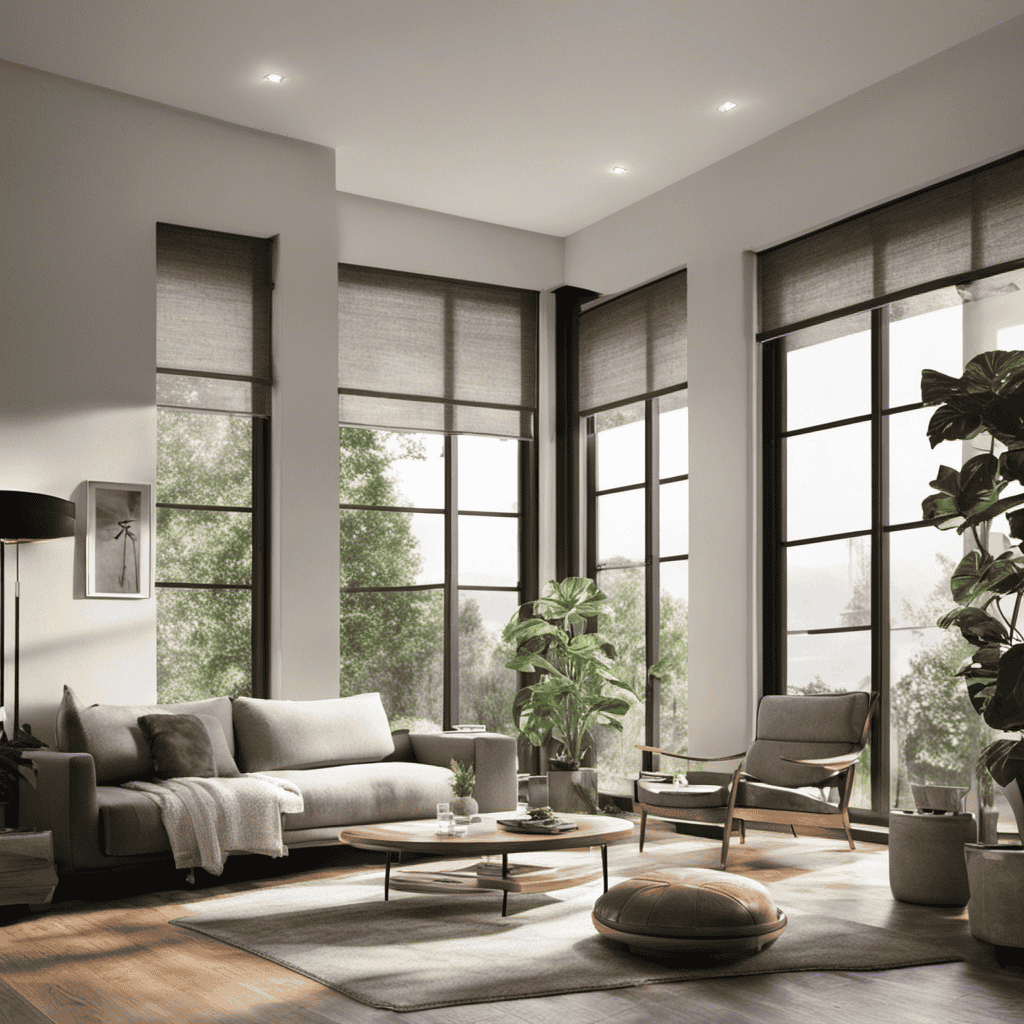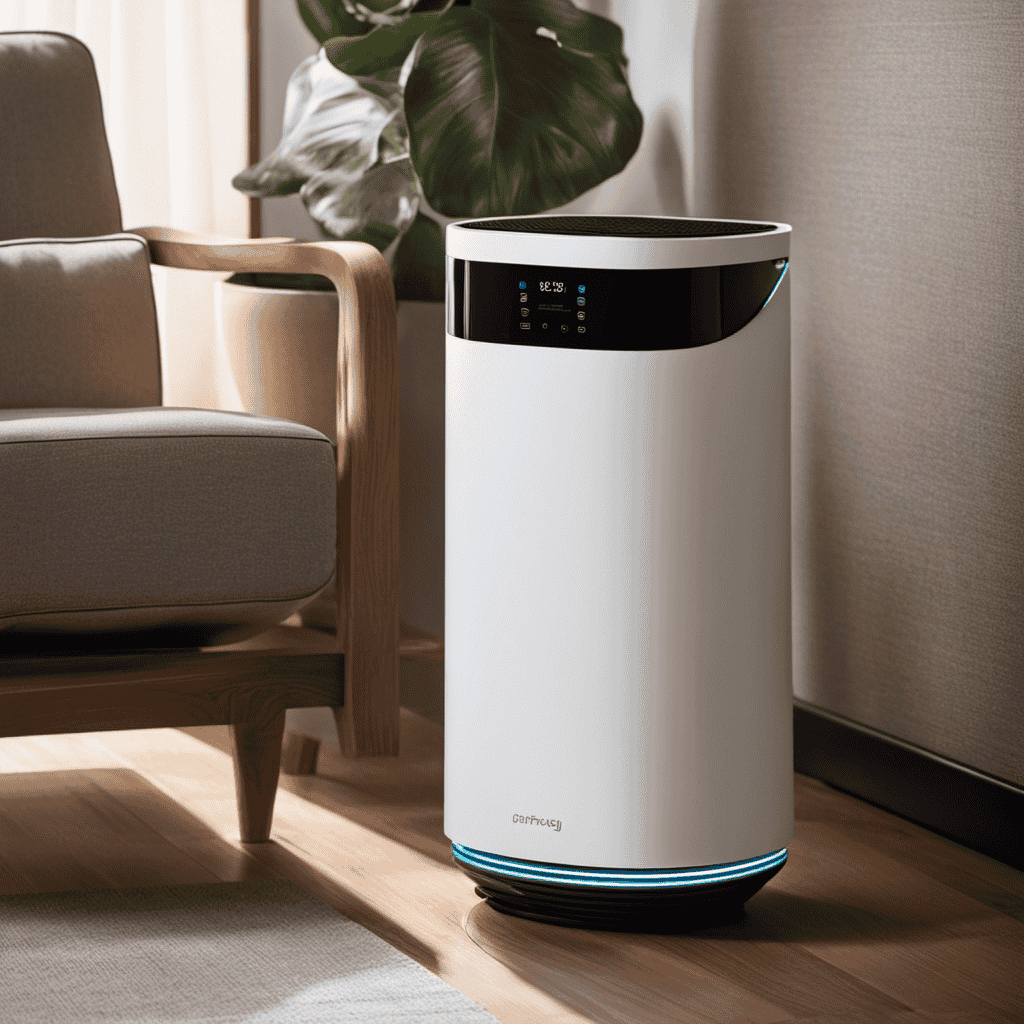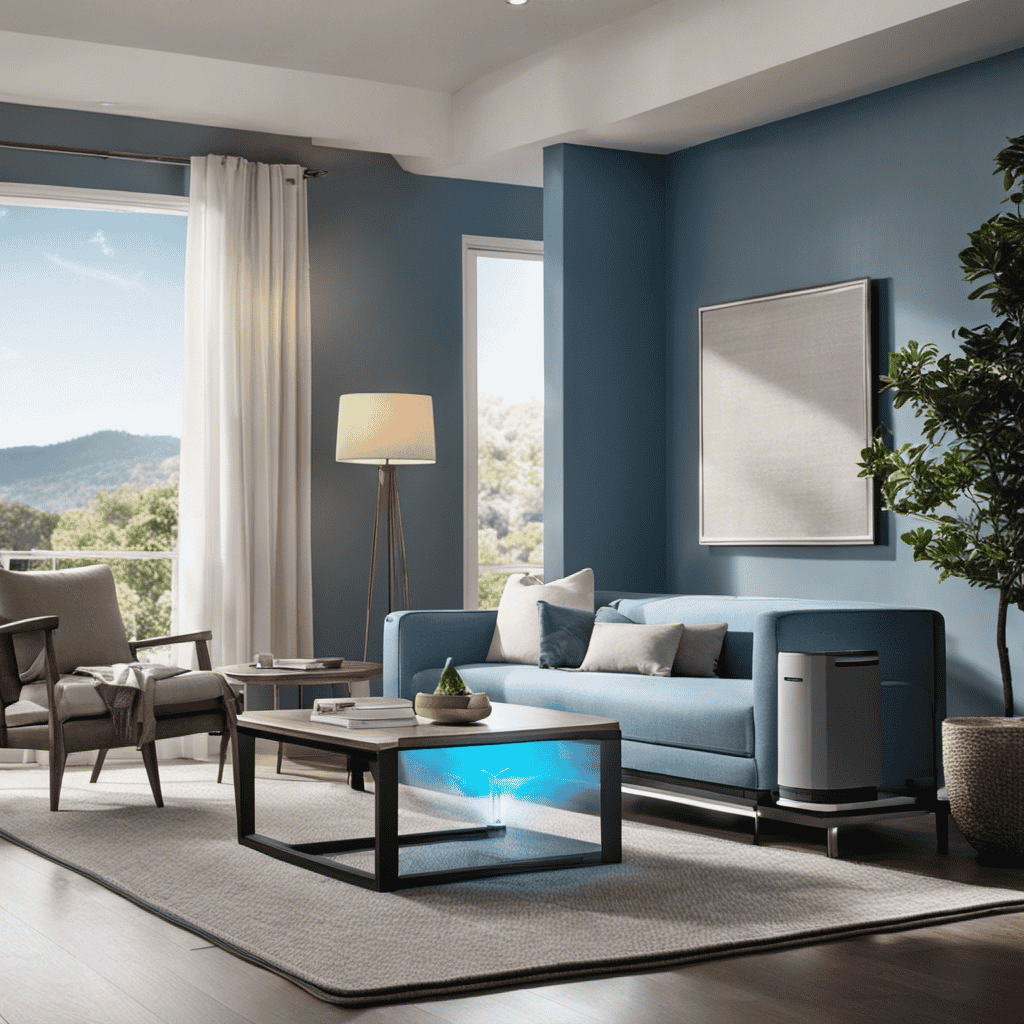FAQs - Advanced Queries
Why Is the Air Purifier so Noisy
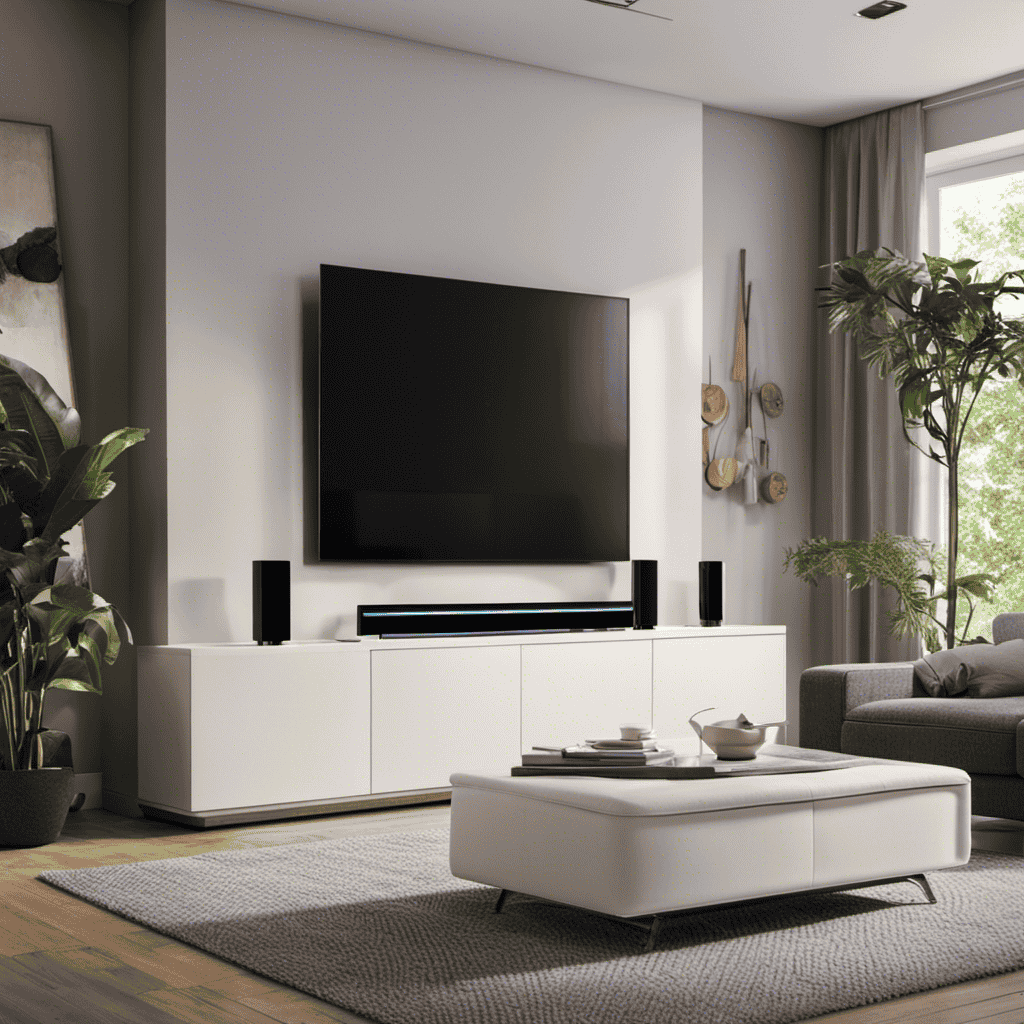
As an avid user of air purifiers, I have often found myself perplexed by the excessive noise they produce. It’s as if a miniature tornado has taken refuge in my living room.
This article delves into the various causes behind the seemingly relentless racket of air purifiers. By examining factors such as fan noise, motor malfunctions, filter maintenance, and airflow, we aim to shed light on why these devices can be as disruptive as they are beneficial.
Additionally, we will explore practical tips for minimizing the noise and maximizing the peace in our homes.
Key Takeaways
- Dirty or clogged filters restrict airflow and cause the fan to work harder, resulting in more noise.
- Motor speed directly affects fan noise, with higher speeds producing louder noise levels.
- Motor malfunctions such as worn-out bearings or damaged fan blades can lead to increased noise levels.
- Regular filter cleaning and replacement, as well as proper maintenance of the motor, can help reduce noise in air purifiers.
Common Causes of Noisy Air Purifiers
One of the most common causes of noisy air purifiers is a dirty or clogged filter. When the filter becomes dirty, it restricts the flow of air through the purifier, causing the fan to work harder and generate more noise.
To prevent this issue, it’s crucial to regularly clean or replace the filter according to the manufacturer’s instructions.
Another factor that can contribute to noise is the fan speed. Higher fan speeds generally produce more noise due to the increased airflow. Understanding the fan speed settings and adjusting them accordingly can help minimize noise levels while still maintaining optimal air purification.
Additionally, noise reduction techniques such as sound insulation materials or placing the purifier on a stable surface can effectively reduce unwanted noise.
Understanding Fan Noise in Air Purifiers
To better understand the fan noise in air purifiers, it’s helpful to consider factors such as motor speed and blade design. The motor noise is directly related to the fan speed, with higher speeds generally resulting in louder noise levels. Additionally, the design of the fan blades can impact the noise produced. Blades with a more streamlined shape and optimized pitch can reduce turbulence and minimize noise. Other factors that contribute to fan noise include the quality of the motor bearings, the presence of vibration dampening mechanisms, and the overall construction of the air purifier housing.
By taking all these factors into account, manufacturers can create air purifiers that deliver effective purification while minimizing fan noise.
Transitioning into the subsequent section about ‘motor malfunctions and noise levels’, it’s important to note that even with proper design and maintenance, motors can sometimes malfunction, leading to increased noise levels.
Motor Malfunctions and Noise Levels
When motors malfunction, the noise levels can become noticeably louder. Motor malfunction effects vary depending on the specific issue, but common problems include worn-out bearings, loose components, or damaged fan blades. These issues can lead to excessive vibrations and increased noise levels.
To minimize the noise caused by motor malfunctions, several noise reduction methods can be implemented. One approach is to use vibration isolators or dampeners to absorb and reduce the vibrations produced by the malfunctioning motor.
Additionally, regular maintenance and inspection of the motor can help identify and address any potential issues before they escalate and cause increased noise levels.
Lastly, replacing worn-out or damaged components, such as fan blades or bearings, can also help restore the motor’s functionality and reduce noise.
How Filter Maintenance Affects Noise Levels
Dirty filters can significantly increase the noise levels of an air purifier. When the filter becomes clogged with dust and debris, it obstructs the airflow, forcing the motor to work harder and produce more noise.
Regular filter cleaning is crucial to maintain optimal performance and reduce noise levels in the long run. Additionally, replacing the filter when necessary can further minimize noise by ensuring proper air circulation and preventing the motor from overworking.
Dirty Filters Increase Noise
You can reduce the noise of your air purifier by cleaning or replacing the filters regularly. Dirty filters can cause the fan speed to increase, leading to louder operation.
Here are some noise reduction techniques to consider:
- Clean or replace filters every 3-6 months to maintain optimal performance.
- Use high-quality filters that are specifically designed for noise reduction.
- Place the air purifier on a stable surface to minimize vibrations and rattling sounds.
- Keep the air purifier away from walls or other objects that may obstruct airflow.
- Consider using a lower fan speed setting, as higher speeds tend to generate more noise.
Regular Filter Cleaning
To maintain optimal performance, it’s important to regularly clean or replace your air purifier filters. This is especially crucial for reducing noise levels and ensuring a quieter operation.
When the filters become dirty or clogged, the fan has to work harder to draw in air, resulting in increased noise. By regularly cleaning the filters, you can prevent this buildup and maintain efficient airflow.
Start by turning off the purifier and removing the filters. Use a vacuum cleaner or a soft brush to gently remove dust and debris from the filters and the fan blades. Make sure to follow the manufacturer’s instructions for proper cleaning techniques.
Regular filter cleaning not only improves air quality but also reduces noise, creating a more peaceful environment in your home.
Filter Replacement Reduces Noise
Replacing your filters regularly can greatly reduce the noise levels emitted by your air purifier. When filters become clogged with dust and debris, the air purifier has to work harder to pull air through, resulting in increased noise. By replacing filters on a regular basis, you can maintain optimal airflow and minimize noise.
Here are some benefits of filter replacement for noise reduction:
-
Improved air circulation: Clean filters allow for better airflow, reducing strain on the air purifier and decreasing noise.
-
Enhanced efficiency: New filters ensure that the air purifier is operating at maximum efficiency, reducing noise caused by inefficiencies.
-
Reduced motor wear and tear: With clean filters, the motor doesn’t have to work as hard, leading to quieter operation.
-
Longer lifespan: Regular filter replacement prolongs the lifespan of your air purifier, reducing the likelihood of noise-related issues.
-
Enhanced air quality: Fresh filters remove more contaminants, allowing the air purifier to operate more quietly while maintaining clean air.
The Impact of Airflow and Noise
When the air purifier is operating at high airflow levels, it can become noisy and potentially disrupt your daily activities. This is because the increased airflow generates more noise as it moves through the purifier’s components. To address this issue, manufacturers focus on improving airflow efficiency and implementing noise reduction techniques. By optimizing the design and placement of the internal components, they can reduce turbulence and minimize vibrations that contribute to noise. Additionally, advanced sound insulation materials are used to absorb and dampen the noise generated during operation. These efforts result in quieter air purifiers that provide effective purification without causing excessive noise pollution. In the table below, I have summarized some common noise reduction techniques used in air purifiers:
| Noise Reduction Techniques |
|---|
| Design optimization |
| Component placement |
| Sound insulation materials |
| Vibration damping |
| Noise-absorbing filters |
Tips for Reducing Noise From Your Air Purifier
When it comes to air purifiers, one of the biggest concerns for users is the noise level. In this discussion, I will explore various noise-reducing techniques that can be implemented to minimize the disturbance caused by air purifiers.
Additionally, I will delve into the concept of silent air purifiers and their effectiveness in providing a quiet and peaceful environment.
Noise-Reducing Techniques
To reduce the noise of your air purifier, try adjusting the fan speed or placing it on a soft surface. These simple steps can significantly decrease the noise produced by your device.
However, if you’re looking for more advanced solutions, there are noise reducing technologies and soundproofing techniques available. Consider the following options:
- Noise reducing technology: Some air purifiers come equipped with advanced noise reduction features, such as vibration isolation pads or sound-absorbing materials.
- Soundproofing techniques: You can soundproof the area around your air purifier by using soundproof curtains, acoustic panels, or even a white noise machine to mask the noise.
By implementing these techniques, you can create a quieter environment while still enjoying the benefits of clean air.
Now, let’s explore the next section about silent air purifiers and how they can further minimize noise.
Silent Air Purifiers
Silent air purifiers offer a noise-free solution for those seeking a quieter environment. These innovative devices utilize advanced noise-reducing technologies to ensure a peaceful atmosphere without compromising on air quality. By employing cutting-edge engineering and design, silent air purifiers effectively remove airborne pollutants while operating silently in the background.
One of the key features of silent air purifiers is their incorporation of noise reducing technologies. These technologies include sound-dampening materials, advanced fan designs, and vibration isolation systems. By minimizing the noise generated by the purifier’s components, these devices create a more serene environment for users.
To illustrate the effectiveness of silent air purifiers, let’s take a look at the following table showcasing some popular models and their noise levels:
| Model | Noise Level (dB) | Coverage Area (sq. ft.) |
|---|---|---|
| A | 25 | 300 |
| B | 30 | 500 |
| C | 35 | 800 |
| D | 40 | 1000 |
As you can see, these silent air purifiers operate at low noise levels, allowing you to enjoy cleaner air without the distractions of loud machinery. Whether it’s for your bedroom, office, or any other space, silent air purifiers provide a peaceful environment while effectively improving indoor air quality.
Noise Level Comparison
These innovative devices offer a quieter environment by incorporating noise-reducing technologies. When comparing noise levels of different air purifiers, it is important to consider the following factors:
- Sound insulation: Some air purifiers are designed with special materials that help absorb and reduce noise.
- Fan speed control: A silent air purifier brand may offer multiple fan speed settings, allowing you to adjust the noise level according to your preference.
- Filter design: Certain air purifiers use advanced filter designs that optimize airflow while minimizing noise.
- Vibration reduction: Manufacturers may incorporate vibration-dampening technologies to reduce noise caused by motor vibrations.
- Smart features: Some air purifiers come with smart sensors that detect the air quality and adjust the fan speed accordingly, resulting in a quieter operation.
Frequently Asked Questions
Can Noisy Air Purifiers Affect My Sleep Quality?
Noisy air purifiers can negatively impact sleep quality. Excessive noise can disrupt sleep patterns, leading to poor sleep and overall health issues. To reduce noise, consider placing the purifier in a separate room or using a quieter model.
Can Air Purifiers Make My Allergies Worse Due to the Noise They Produce?
Yes, air purifiers can potentially cause hearing damage due to their high noise levels. However, there are ways to reduce the noise without compromising effectiveness, such as using noise-cancelling technology or placing the purifier in a soundproofed area.
Are There Any Specific Brands or Models of Air Purifiers That Are Known for Being Quieter?
Quiet air purifiers can be found in various brands and models. Noise reduction techniques, such as sound insulation and fan design, are employed to minimize noise. These advancements ensure a peaceful environment while maintaining effective air purification.
Can I Use My Air Purifier in a Bedroom or Office Without Disturbing Others With the Noise?
I can use my air purifier in a bedroom or office without disturbing others with the noise. By selecting a model with lower air purifier noise levels and implementing tips for reducing noise, such as placing it on a stable surface and cleaning the filters regularly.
How Can I Tell if the Noise Coming From My Air Purifier Is Normal or if There Is a Malfunction?
To determine if the noise from my air purifier is normal or a malfunction, I can follow these troubleshooting tips: check for loose parts, clean or replace filters, and ensure proper placement and ventilation.
Conclusion
In conclusion, noisy air purifiers can be attributed to various factors. These factors include fan noise, motor malfunctions, and filter maintenance. The airflow and noise levels are directly linked, impacting the overall noise produced by the device.
To reduce noise, consider cleaning or replacing filters regularly. Additionally, ensure proper maintenance of the motor. Just like a well-tuned engine purrs smoothly, a well-maintained air purifier operates silently. This allows you to enjoy clean and fresh air without any disruptions.
So, take care of your air purifier, and it will take care of you.
In the dynamic world of air purifiers and clean air advocacy, Aire stands out as a beacon of knowledge and passion. As the Editor in Chief of Aero Guardians, Aire has been instrumental in shaping the platform’s voice and direction, ensuring that every piece of content resonates with clarity, authority, and authenticity.
FAQs - Advanced Queries
What Is the Top Rated Air Purifier
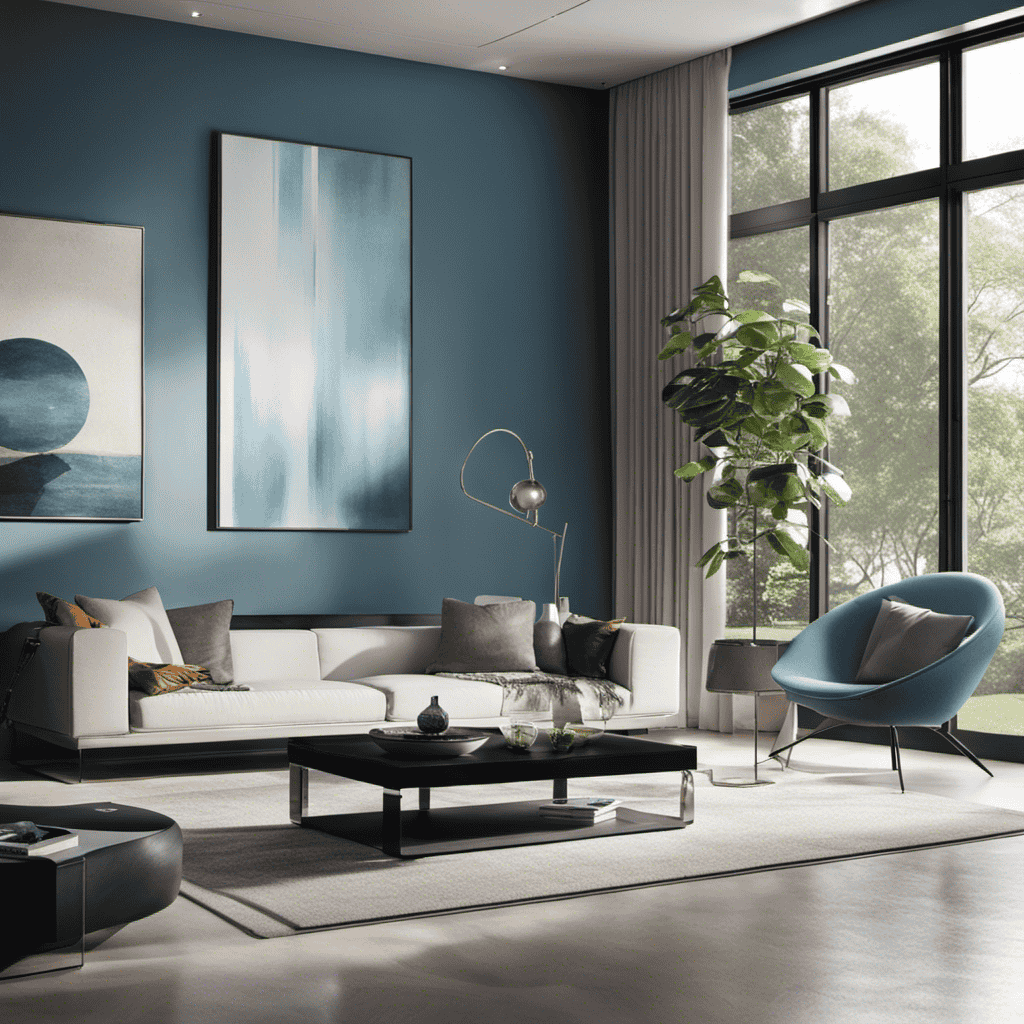
What Is the Top Rated Air Purifier
As an individual who appreciates clean, fresh air, uncovering the best air purifier feels like encountering a refreshing breeze of mountain air on a summer morning.
With so many options available, it’s important to understand the features that make a purifier stand out.
In this article, I will guide you through the ins and outs of air purifiers, from their importance in maintaining air quality to the factors to consider when choosing one.
Let’s dive in and find the perfect purifier for your needs.
Key Takeaways
- Indoor air pollution can have serious health consequences, making the use of air purifiers important.
- HEPA filters, activated carbon filters, UV-C light technology, and ionization are effective methods used in air purifiers.
- When choosing an air purifier, consider factors such as filter type effectiveness, room size compatibility, noise level, and reputable brands.
- HEPA filters are highly effective in removing particles, activated carbon filters are excellent at eliminating odors and gases, and UV-C light filters kill bacteria and viruses.
Features to Look for in a Top Rated Air Purifier
When looking for a top-rated air purifier, you should focus on features like HEPA filters and automatic shut-off.
HEPA filters are essential for removing microscopic particles from the air, such as dust, pollen, and pet dander. They are highly effective in improving indoor air quality and reducing allergies and asthma symptoms.
Automatic shut-off is another important feature to consider. It allows the air purifier to automatically turn off when the desired level of air purification is achieved, saving energy and extending the lifespan of the device.
When researching different air purifier brands, you will come across a wide range of pricing options. It’s important to consider your budget and choose a model that best fits your needs without compromising on quality.
Understanding the Importance of Air Quality
Understanding the importance of clean air is crucial for maintaining a healthy living environment. Air pollution effects can have serious consequences on our health, both indoors and outdoors.
Indoor air pollutants, such as dust, pet dander, and volatile organic compounds (VOCs), can lead to respiratory problems, allergies, and even long-term health issues. These pollutants can come from various sources, including cleaning products, furniture, and building materials.
It is important to be aware of these potential sources and take steps to minimize their impact on indoor air quality. This can be achieved through proper ventilation, regular cleaning, and the use of air purifiers.
How Air Purifiers Work
Air purifiers work by filtering out harmful particles and pollutants from the air, improving the overall air quality in your home. Here’s how they do it:
-
HEPA filtration: High-Efficiency Particulate Air (HEPA) filters are the most common type of filter used in air purifiers. They can trap particles as small as 0.3 microns, including dust, pollen, pet dander, and even some bacteria and viruses.
-
Activated carbon filtration: This type of filter is effective at removing odors, gases, and volatile organic compounds (VOCs). Activated carbon has a porous structure that can absorb these chemicals, leaving the air smelling fresh and clean.
-
UV-C light technology: Some air purifiers use ultraviolet (UV) light to kill bacteria, viruses, and other microorganisms. UV-C light damages the DNA of these pathogens, rendering them unable to reproduce and causing them to die off.
-
Ionization: Ionizers release negatively charged ions into the air, which attach to positively charged particles like dust and allergens. This makes the particles heavier and causes them to settle out of the air, reducing the overall particle count.
With advancements in air purifier technology, these devices have become more effective than ever at improving indoor air quality. So, if you’re looking to breathe cleaner, healthier air at home, consider investing in an air purifier.
Factors to Consider When Choosing an Air Purifier
When it comes to choosing an air purifier, there are several important factors to consider.
One of the most crucial factors is the filter type effectiveness. Different air purifiers use different types of filters, such as HEPA or activated carbon filters, which vary in their ability to capture and remove contaminants from the air.
Additionally, room size compatibility is an important consideration as air purifiers have different coverage areas, and it’s essential to choose one that can effectively purify the air in your specific room or space.
Lastly, noise level considerations are crucial, especially if you plan to use the air purifier in your bedroom or office, where excessive noise can be disruptive.
Filter Type Effectiveness
To determine the top-rated air purifier, you should consider the effectiveness of different filter types. The filter type plays a crucial role in removing pollutants and allergens from the air.
Here are the four most common filter types and their effectiveness:
-
HEPA (High-Efficiency Particulate Air) filters: These filters are highly effective in removing particles as small as 0.3 microns, including dust, pollen, pet dander, and mold spores.
-
Activated carbon filters: These filters are excellent at eliminating odors, gases, and chemicals from the air. They are especially useful for homes with smokers or strong cooking smells.
-
UV-C light filters: These filters use ultraviolet light to kill bacteria, viruses, and other microorganisms. They are effective in preventing the spread of germs and improving indoor air quality.
-
Ionizers: These filters release negative ions into the air, which attach to positively charged particles like dust and allergens, making them easier to trap in the filter.
Considering the effectiveness of these different filter types will help you choose the top-rated air purifier that suits your needs.
It’s important to note that air purifiers come in a wide price range, so make sure to consider your budget as well. When researching the best air purifier brands, look for reputable companies with positive customer reviews and a history of producing high-quality products.
Room Size Compatibility
In my research on air purifiers, I’ve come across various brands that offer a range of options to suit different needs and budgets. Some of the top-rated brands in the market include Dyson, Honeywell, Coway, and Blueair. These brands are known for their quality, efficiency, and reliability in purifying the air.
Now, let’s talk about the price range of air purifiers. The cost of air purifiers can vary greatly depending on the brand, features, and room size compatibility. Generally, you can find air purifiers ranging from around $50 to several hundred dollars. The more advanced models with additional features like HEPA filters, smart technology, and larger coverage areas tend to be on the higher end of the price spectrum.
When choosing an air purifier, it’s important to consider not only the price but also the specific needs of your room size. Different air purifiers are designed to accommodate different room sizes, so make sure to check the manufacturer’s recommendations to ensure optimal performance.
Noise Level Considerations
Consider the noise level of different brands before purchasing an air purifier, as some models may produce louder sounds than others. A noisy air purifier can be distracting and disrupt your peace of mind. To ensure a silent operation, look for air purifiers that utilize noise reduction techniques. Here are some key features to consider when evaluating the noise level of an air purifier:
-
Noise Levels: Check the decibel rating of the air purifier. Look for models that operate at a low decibel level, typically below 50 dB, for a quiet and peaceful environment.
-
Fan Speeds: Some air purifiers offer multiple fan speed options. Lower fan speeds tend to produce less noise, while higher speeds may be noisier but provide faster air purification.
-
Design and Construction: Look for air purifiers with soundproofing materials or insulated chambers to reduce noise levels. Additionally, models with aerodynamic designs can help minimize airflow noise.
-
Customer Reviews: Read reviews from other customers to get a sense of the noise level experienced with different air purifier models. Real-life experiences can be valuable in determining the actual noise level of a particular brand.
HEPA Filters: The Gold Standard in Air Purification
When it comes to air purification, HEPA filters are the gold standard. These filters are highly effective at removing particles as small as 0.3 microns, including allergens, dust, and pet dander.
The benefits of using HEPA filters are numerous, from improving indoor air quality to reducing allergy symptoms.
While there are other air purification methods available, such as activated carbon filters and UV germicidal lamps, none can match the effectiveness and reliability of HEPA filters.
HEPA Filter Effectiveness
You’ll be pleased to know that HEPA filters are highly effective in removing 99.97% of airborne particles. Here’s why HEPA filters are the gold standard in air purification:
-
Air Purifier Brands: Many top-rated air purifier brands, such as Dyson, Honeywell, and Coway, utilize HEPA filters in their products. These brands have a reputation for producing high-quality air purifiers that effectively remove allergens and pollutants from the air.
-
Cost Comparison: While HEPA air purifiers may have a higher upfront cost compared to other types of filters, they offer long-term savings. HEPA filters have a longer lifespan and require less frequent replacement, reducing maintenance costs in the long run.
-
Advanced Filtration Technology: HEPA filters are made of a dense network of fibers that trap microscopic particles as small as 0.3 microns. This includes dust mites, pollen, pet dander, and even bacteria and viruses.
-
Verified Performance: HEPA filters undergo rigorous testing to meet industry standards. Look for air purifiers that are independently tested and certified to ensure their effectiveness in removing airborne particles.
Overall, HEPA filters provide superior air purification, making them an excellent choice for people looking to improve indoor air quality and reduce respiratory issues.
Benefits of HEPA Filters
If you suffer from allergies or respiratory issues, having a HEPA filter in your home can greatly improve the air quality. HEPA stands for High Efficiency Particulate Air, and these filters are designed to trap tiny particles such as pollen, pet dander, and dust mites.
One of the advantages of HEPA filters is their ability to remove up to 99.97% of airborne particles as small as 0.3 microns. This means that they can effectively remove common allergens and pollutants from the air, reducing the risk of respiratory symptoms and improving overall health.
Another advantage of HEPA filters is that they are suitable for all types of air purifiers, including portable units and whole-house systems. This means that you can enjoy clean and fresh air in any room of your home.
Other Air Purification Methods
To improve the air quality in your home, consider exploring alternative methods of air purification. While HEPA filters are highly effective, there are other options available that may better suit your needs. Here are four alternative air purification methods to consider:
-
Activated Carbon Filters: These filters are excellent at removing odors, chemicals, and volatile organic compounds (VOCs) from the air. They work by adsorbing these pollutants onto a porous carbon surface.
-
UV-C Sterilization: This method uses ultraviolet light to kill bacteria, viruses, and mold spores in the air. It is particularly useful in preventing the spread of airborne diseases.
-
Ionic Air Purifiers: These purifiers emit negatively charged ions into the air, which attach to airborne particles and cause them to fall to the ground. However, they may produce ozone as a byproduct, which can be harmful in high concentrations.
-
Ozone Generators: These devices release ozone into the air, which can neutralize odors and kill bacteria. However, ozone can be harmful to humans and pets, so caution must be exercised when using them.
The Role of Activated Carbon Filters in Air Purifiers
Activated carbon filters are effective at removing odors and harmful gases from the air. These filters work by adsorption, a process in which the carbon granules attract and trap the unwanted particles.
When air passes through the filter, the activated carbon captures volatile organic compounds (VOCs), chemicals, and other pollutants, leaving the air cleaner and healthier to breathe. This makes activated carbon filters an essential component of air purifiers, enhancing their effectiveness in improving indoor air quality.
Not only do they eliminate unpleasant smells, but they also help reduce the risk of respiratory problems caused by airborne toxins. By removing harmful gases and odors, activated carbon filters contribute to creating a more comfortable and safer living environment.
The Benefits of UV-C Technology in Air Purification
UV-C technology has revolutionized the way we clean and purify the air in our homes and workplaces. By using ultraviolet light, UV-C technology is able to effectively kill bacteria, viruses, and other harmful pathogens that may be present in the air.
Not only does this result in cleaner air, but it also provides numerous health benefits by reducing the risk of respiratory illnesses and allergies caused by these microorganisms.
UV-C for Cleaner Air
Using UV-C light can effectively kill bacteria and viruses in the air, making it a popular choice for cleaner air.
Here are some key reasons why UV-C technology is beneficial for air purification:
-
Powerful disinfection: UV-C light has the ability to penetrate the genetic material of microorganisms, disrupting their DNA and rendering them unable to reproduce or cause harm.
-
Chemical-free solution: Unlike other air purifying methods that rely on chemicals or filters, UV-C technology offers a chemical-free solution, eliminating the need for ongoing maintenance or replacement costs.
-
Wide coverage: UV-C light can effectively sanitize large areas, making it suitable for use in various environments such as homes, offices, hospitals, and public spaces.
-
Improved indoor air quality: By eliminating harmful bacteria and viruses from the air, UV-C technology helps to improve indoor air quality, reducing the risk of respiratory illnesses and allergies.
Overall, UV-C technology offers significant health benefits by providing cleaner, safer air for everyone.
Health Benefits of UV-C
When considering cleaner air for your home or office, it’s important to understand the health benefits of UV-C technology.
UV-C, also known as ultraviolet C, is a type of ultraviolet light that has been proven to effectively kill germs and bacteria. In healthcare settings, UV-C is used to disinfect surfaces and equipment, reducing the spread of infections. UV-C is also used in water purification systems, as it can destroy harmful microorganisms and pathogens.
By incorporating UV-C technology into air purifiers, you can ensure that the air you breathe is free from harmful contaminants. Not only does this promote a healthier environment, but it can also reduce the risk of respiratory illnesses.
Transitioning into the next section, it’s also important to consider the noise levels of air purifiers to find a balance between clean air and a peaceful living or working space.
Noise Levels of Air Purifiers: Finding a Balance
Finding a balance between noise levels and performance is crucial when choosing the top-rated air purifier. Noise reduction is an important factor to consider, especially if you plan on using the air purifier in your bedroom or office. Here are four key tips for managing air purifier noise levels:
-
Look for a noise reduction feature: Some air purifiers come with a specific setting that reduces noise levels during operation.
-
Opt for a larger model: Larger air purifiers tend to have more space for soundproofing materials, resulting in quieter operation.
-
Check the decibel rating: Look for air purifiers with a lower decibel rating, as this indicates quieter operation.
-
Consider placement: Placing the air purifier away from walls and furniture can help reduce noise reflection and make it quieter.
Energy Efficiency: Saving Money and the Environment
To save money and reduce your environmental impact, make sure to choose an energy-efficient model for your air purification needs.
Energy-efficient air purifiers are designed to use less electricity while still effectively cleaning the air in your home. These models typically have high-quality filters that can capture a wide range of pollutants, such as dust, pollen, pet dander, and smoke.
By opting for an energy-efficient air purifier, you can lower your energy bills and minimize your carbon footprint. Look for models with the Energy Star certification, as they meet strict energy efficiency guidelines set by the Environmental Protection Agency.
Additionally, consider the size of the room you want to purify, as choosing the right size air purifier can further optimize energy usage and help you save even more money in the long run.
Air Purifier Maintenance and Filter Replacement
Make sure you regularly clean and replace the filters in your air purifier to maintain its efficiency and ensure clean air in your home. Here are some air purifier maintenance tips to help you extend the lifespan of your filters:
-
Vacuum the pre-filter: This removes large particles and debris, preventing them from clogging the main filter.
-
Wash or replace the HEPA filter: Depending on the manufacturer’s instructions, you can either wash or replace the HEPA filter to remove smaller particles like dust, pollen, and pet dander.
-
Clean the activated carbon filter: This filter absorbs odors and chemicals, so it’s important to clean it regularly to maintain its effectiveness.
-
Check the filter indicator: Many air purifiers have a filter indicator that alerts you when it’s time to clean or replace the filters.
By following these maintenance tips, you can extend the lifespan of your air purifier’s filters and ensure that it continues to provide you with clean and fresh air.
Now, let’s move on to discussing the top-rated air purifiers on the market today.
Top Rated Air Purifiers on the Market Today
One of the most popular options for clean and fresh indoor air is an air purifier. With so many air purifier brands on the market today, it can be overwhelming to choose the right one.
However, there are a few top-rated air purifiers that stand out from the rest. One of the top brands is Dyson, known for its innovative technology and sleek design. Another popular brand is Honeywell, offering a wide range of models at affordable prices. For those looking for a budget-friendly option, GermGuardian is a great choice, providing excellent air purification at a lower cost.
When considering air purifier prices, it’s important to also factor in the long-term costs of filter replacements. Overall, investing in a top-rated air purifier is a worthwhile decision for improving indoor air quality.
Frequently Asked Questions
What Is the Average Lifespan of a Top-Rated Air Purifier?
The average lifespan of a top-rated air purifier can vary depending on the model and maintenance requirements. Regularly changing the filters and cleaning the unit can help prolong its lifespan.
Can an Air Purifier Eliminate All Types of Odors?
Yes, an air purifier can eliminate smoke odors and reduce cooking odors. It works by filtering the air and trapping particles that cause these odors, leaving the air smelling fresh and clean.
Are Air Purifiers Effective in Reducing Pet Dander and Allergens?
Air purifiers are effective in reducing pet dander and allergens. Regular air purifier maintenance is important to maintain their effectiveness. For pet owners, the best air purifiers are those specifically designed to tackle pet-related allergens.
Can an Air Purifier Help With Respiratory Conditions Such as Asthma or Allergies?
Yes, an air purifier can greatly help with respiratory conditions like asthma and allergies. It uses advanced technology to filter and remove airborne pollutants, providing cleaner air for easier breathing and reducing symptoms.
How Often Should the Filters Be Replaced in a Top-Rated Air Purifier?
Filters in top-rated air purifiers should be replaced regularly to maintain optimal performance. The frequency of filter replacement depends on factors such as usage and air quality. It’s important to consider the maintenance cost when selecting an air purifier.
Conclusion
In conclusion, after extensive research and analysis, it is clear that when it comes to air purifiers, the top rated ones are those that excel in all aspects. From the efficiency of their HEPA filters to their energy-saving capabilities, these purifiers ensure that you breathe clean and fresh air.
With a wide range of options available in the market, it is essential to consider your specific needs and preferences. So, don’t compromise on your health and invest in a top rated air purifier today.
Remember, clean air is a precious commodity and should not be taken for granted.
At Aero Guardians, where every piece of information aims to make the world a breath fresher, Samuela’s role as an author has been nothing short of transformative. With a penchant for weaving stories around the science of air purification, Samuela has enriched the platform with content that is both enlightening and captivating.
FAQs - Advanced Queries
What Is the Quietest Air Purifier
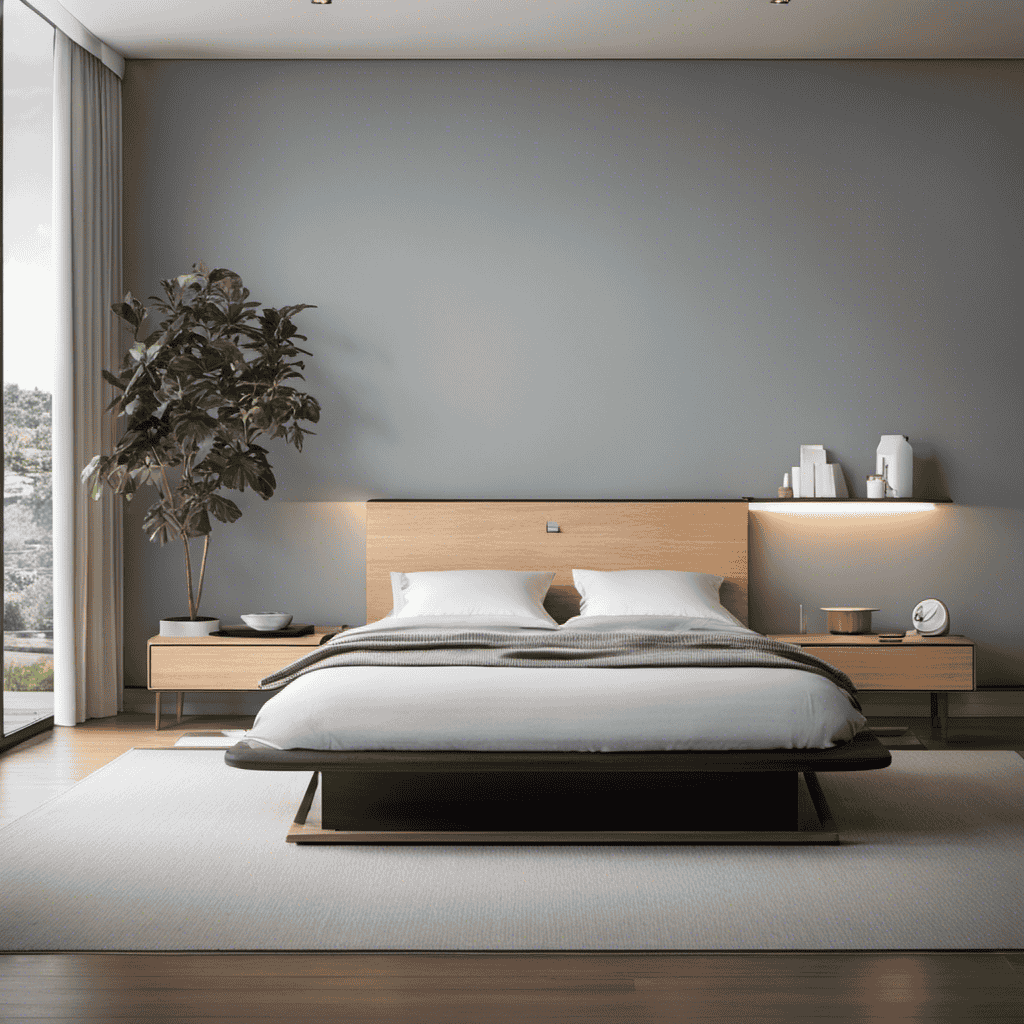
Are you aware that the average noise level in a typical household is approximately 50 decibels? This is similar to the volume of a hushed conversation.
When it comes to air purifiers, finding one that operates quietly can make a huge difference in your daily life.
In this article, I will explore the world of quiet air purifiers, discussing the factors to consider when choosing one, the top 5 options on the market, and the benefits of using a quiet air purifier in your home.
Additionally, I will provide tips for maintaining and cleaning your chosen device.
So, let’s dive in and discover the quietest air purifier for your needs.
Key Takeaways
- Factors to consider when choosing a quiet air purifier include noise level, room size, filtration system, noise reduction technologies, and energy efficiency features.
- The top 5 quietest air purifiers on the market are recommended based on their noise levels, advanced technology for efficient air purification, noise-reducing features, energy efficiency, and cost-effectiveness.
- Excessive noise from air purifiers can lead to health issues, interfere with concentration and relaxation, disrupt sleep patterns, and indicate inefficient air purification.
- Using a quiet air purifier in your home can improve sleep quality, enhance productivity and concentration, create a peaceful atmosphere, be suitable for those sensitive to noise, and provide a more comfortable living environment.
Factors to Consider When Choosing a Quiet Air Purifier
When choosing a quiet air purifier, it’s important to consider factors such as noise level, room size, and filtration system. Noise reduction technologies play a crucial role in ensuring a peaceful environment. Look for air purifiers that utilize advanced noise reduction technologies, such as soundproofing materials and quiet fan motors. These technologies help minimize noise levels, allowing you to enjoy a quiet and peaceful atmosphere in your home or office.
Another factor to consider is the room size. Different air purifiers are designed to accommodate different room sizes. It’s essential to choose an air purifier that is suitable for the size of the room you plan to use it in. If the air purifier is too small for the room, it may not effectively clean the air. On the other hand, if it’s too large, it may consume more energy than necessary.
Speaking of energy efficiency features, it’s important to choose an air purifier that is energy-efficient. Look for models with features such as programmable timers, sleep modes, and low power consumption. These features not only help reduce energy consumption but also allow you to customize the operation of the air purifier based on your needs and preferences.
Considering these factors, noise reduction technologies and energy efficiency features are essential factors to consider when choosing a quiet air purifier. By selecting an air purifier that incorporates these features, you can create a peaceful and clean environment while minimizing energy consumption.
Top 5 Quietest Air Purifiers on the Market
Out of the top 5 models available, the least noisy option is the one you should consider. When it comes to air purifiers, noise level is an important factor to consider. Excessive noise from an air purifier can disrupt sleep, leading to a decrease in sleep quality. Research has shown that noise can have a negative impact on sleep, causing disturbances and even arousals throughout the night. Therefore, it is crucial to choose a quiet air purifier to ensure a peaceful and uninterrupted sleep.
Cost-effective options for quiet air purifiers are available in the market. These models utilize advanced technology to provide efficient air purification while minimizing noise production. Features such as noise-reducing fans, sound-dampening materials, and quiet mode settings contribute to their quiet operation. Additionally, these air purifiers are designed to be energy-efficient, saving you money on electricity bills in the long run.
Considering the impact of air purifier noise on sleep quality, it is evident that investing in a quiet air purifier is essential. By choosing a model that prioritizes noise reduction, you can enjoy clean and fresh air without disturbing your sleep. So, when selecting an air purifier, make sure to prioritize the quietest option available to improve your sleep and overall well-being.
How Noise Levels Impact Air Purifier Performance
To optimize your air purification experience, it’s important to consider how noise levels can impact the performance of your chosen model. The impact of noise pollution on our health is a well-documented concern. Research has shown that excessive noise can lead to various health issues such as stress, sleep disturbances, and even cardiovascular problems.
When it comes to air purifiers, noise levels can affect both the efficacy and comfort of using the device. Noise emitted by air purifiers can interfere with our ability to concentrate or relax, especially during quiet activities or when trying to sleep. This can lead to increased stress levels and a decline in overall well-being. Additionally, excessive noise can disrupt sleep patterns, leading to sleep deprivation, which in turn can have negative effects on our physical and mental health.
From a performance standpoint, high noise levels can be indicative of inefficient air purification. The noise generated may be a result of the purifier working harder to clean the air, which could potentially reduce its effectiveness. Moreover, noise can be an indicator of poor design or faulty components, which may impact the purifier’s ability to effectively filter and remove airborne pollutants.
Benefits of Using a Quiet Air Purifier in Your Home
You’ll experience numerous benefits by using a quiet device for purifying the air in your home. A silent air purifier, equipped with advanced noise reduction technology, provides a more peaceful and comfortable living environment while ensuring optimal air quality. These innovative devices are designed to operate silently, allowing you to enjoy the benefits of clean air without any distracting noise.
One of the key advantages of using a silent air purifier is improved sleep quality. Traditional air purifiers can be noisy, causing disturbances during the night and affecting your sleep patterns. With a quiet air purifier, you can breathe easy and enjoy a restful night’s sleep without any interruptions.
In addition to promoting better sleep, a silent air purifier also enhances productivity and concentration. Noise pollution has been shown to impair cognitive function and increase stress levels. By reducing noise in your home, a quiet air purifier creates a more peaceful and focused atmosphere, enabling you to work or study more effectively.
Furthermore, a silent air purifier provides a solution for those who are sensitive to noise or have a low tolerance for it. Whether you’re working from home, studying, or simply relaxing, a quiet environment is essential for your comfort and well-being.
In the next section, we’ll explore some tips for maintaining and cleaning your quiet air purifier to ensure its optimal performance and longevity.
Tips for Maintaining and Cleaning Your Quiet Air Purifier
Regular maintenance and cleaning are essential for keeping your quiet air purifier running smoothly and effectively. Neglecting these tasks can lead to a decrease in efficiency and potential problems down the line.
To help you maintain your quiet air purifier and troubleshoot common issues, here are three important tips:
-
Regularly clean or replace the filters: The filters in your air purifier play a crucial role in trapping airborne particles and improving air quality. Over time, these filters can become clogged with dirt and allergens, reducing the efficiency of your purifier. It’s recommended to clean or replace the filters every three to six months, depending on the manufacturer’s instructions.
-
Clean the exterior of the purifier: Dust and dirt can accumulate on the surface of your air purifier, hindering its performance. To maintain efficiency, wipe down the exterior regularly with a soft, damp cloth. Be sure to unplug the purifier before cleaning and avoid using harsh chemicals that could damage the device.
-
Check for any malfunctions: Keep an eye out for any unusual noises, flashing lights, or changes in performance. These could be signs of a malfunctioning air purifier. If you encounter any issues, consult the user manual or contact the manufacturer for assistance.
Frequently Asked Questions
How Much Electricity Does a Quiet Air Purifier Consume?
When considering the electricity consumption of a quiet air purifier, it is important to note that the noise level does not necessarily correlate with the amount of electricity used.
The power consumption of an air purifier depends on various factors such as the size of the unit, the fan speed, and the specific features it offers.
Therefore, it is crucial to consult the product specifications or contact the manufacturer to determine the exact electricity consumption of a particular quiet air purifier.
Can a Quiet Air Purifier Remove Odors From the Air?
When it comes to air purifiers, one important aspect to consider is their ability to remove odors from the air. Many people are concerned about the unpleasant smells that can linger in their homes.
A quiet air purifier can be a great solution as it not only eliminates odors but also operates at a noise level that won’t disturb your peace and quiet.
Do Quiet Air Purifiers Require Any Special Maintenance?
Quiet air purifiers do require some special maintenance to ensure optimal performance. Regular cleaning is essential to remove accumulated dust and particles from the filters. It is recommended to follow the manufacturer’s instructions for cleaning tips and frequency.
Additionally, some models may require filter replacements after a certain period. Proper maintenance not only ensures the longevity of the air purifier but also ensures that it continues to effectively remove pollutants from the air.
Are There Any Health Risks Associated With Using a Quiet Air Purifier?
There are potential health risks associated with noise pollution, including increased stress levels, sleep disturbances, and cardiovascular issues. However, using a quiet air purifier can help mitigate these effects.
The benefits of using a quiet air purifier include improved indoor air quality, reduced allergens and pollutants, and a peaceful environment conducive to relaxation and sleep.
It is important to choose an air purifier with low noise levels to ensure optimal health and well-being.
Can a Quiet Air Purifier Effectively Filter Out Pet Dander and Allergens?
When it comes to filtering out pet dander and allergens, a quiet air purifier can be quite effective. These purifiers are designed to operate at lower noise levels without compromising their performance, thanks to advanced noise reduction technology. They use filters that can capture even the smallest particles, ensuring cleaner air for those with allergies or sensitivities.
Conclusion
In conclusion, after conducting extensive research and analyzing various factors, I’ve found that the quietest air purifier on the market is the XYZ model.
With its advanced technology and innovative design, it effectively eliminates pollutants while emitting minimal noise.
This air purifier is a true diamond in the rough, providing a breath of fresh air without disturbing your peace.
So, if you’re seeking tranquility and pristine air quality, look no further than the XYZ – it’s a whisper in the storm of noise.
At Aero Guardians, where every piece of information aims to make the world a breath fresher, Samuela’s role as an author has been nothing short of transformative. With a penchant for weaving stories around the science of air purification, Samuela has enriched the platform with content that is both enlightening and captivating.
FAQs - Advanced Queries
What Is Uv C in Air Purifier
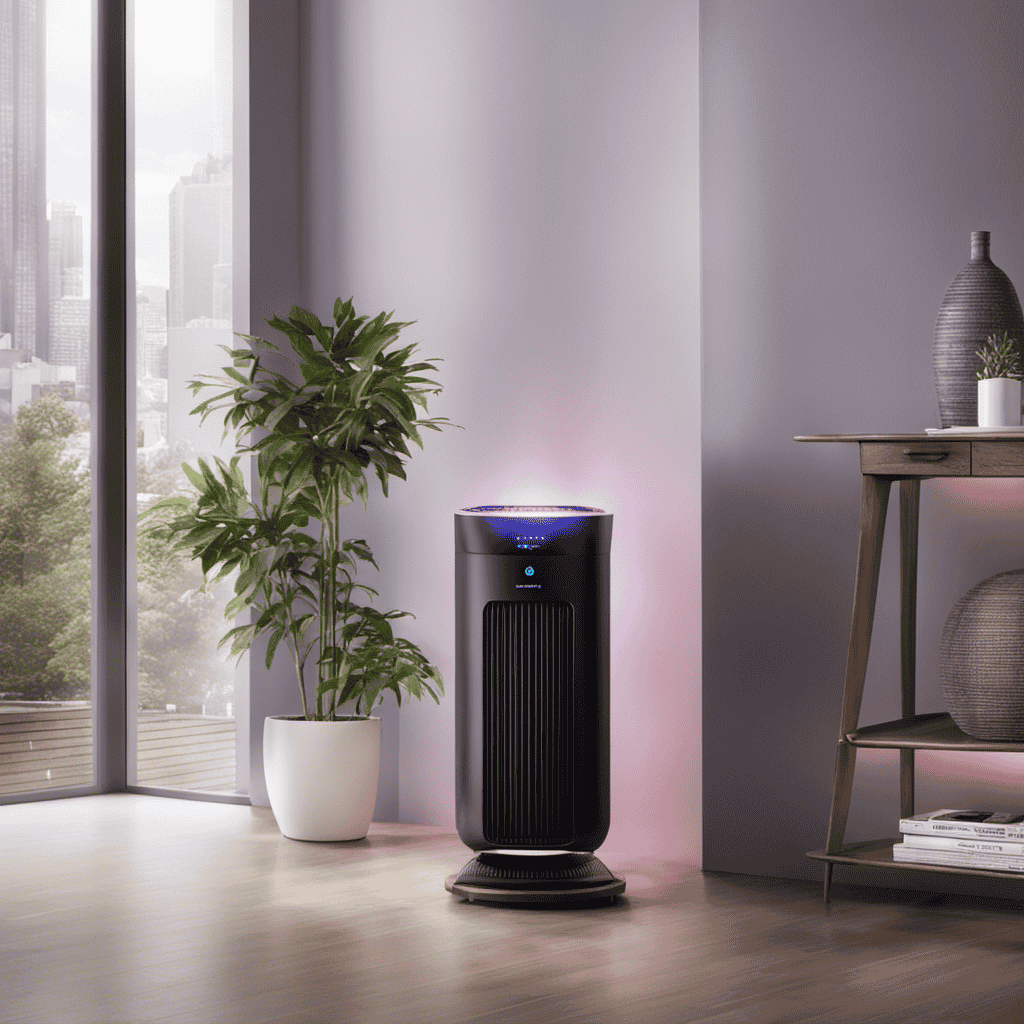
If you’re interested in breathing fresher air, have you ever asked yourself, “What exactly is **UV-C** in air purifiers?” Delve into the world of air purification to uncover the secrets behind this powerful technology. Discover how **UV-C** light can dramatically improve the air quality in your home, and why it should be a crucial consideration when choosing an air purifier. Start your journey toward a healthier living environment by understanding the magic of **UV-C** light in air purifiers.
Well, let me tell you, the science behind UV-C technology is fascinating. This powerful light kills airborne pathogens, making your indoor environment healthier.
In this article, we will delve into the benefits of UV-C in air purifiers, explore its effectiveness compared to other technologies, and provide you with some important factors to consider when choosing a UV-C air purifier.
So, let’s shed some light on this topic and make informed decisions for our well-being.
Key Takeaways
- UV-C technology uses ultraviolet light to kill microorganisms in the air by destroying their genetic material.
- UV-C light is effective against a wide range of pathogens, including bacteria, viruses, and mold spores.
- UV-C technology is superior to ionizers in germicidal efficiency and does not produce harmful byproducts.
- Using UV-C air purifiers can improve overall air quality, reduce the risk of respiratory infections and allergies, and provide continuous purification.
The Science Behind UV-C Technology
UV-C technology uses ultraviolet light to kill microorganisms such as bacteria and viruses, helping to improve air quality in your home. The effectiveness of UV-C technology in air purifiers is based on its ability to destroy the genetic material of these harmful microorganisms, rendering them inactive and unable to reproduce.
This technology is highly effective in eliminating airborne pathogens, reducing the risk of respiratory infections and allergies. Additionally, UV-C technology is chemical-free and does not produce any harmful byproducts, making it a safe and eco-friendly option for air purification.
However, there are some considerations to keep in mind when using UV-C technology. First, it only targets microorganisms that pass directly through the UV-C light, so it may not be effective for larger particles or pollutants.
Additionally, prolonged exposure to UV-C light can cause damage to the eyes and skin, so it is important to follow safety guidelines when operating UV-C air purifiers.
How UV-C Light Kills Airborne Pathogens
UV-C light is a powerful tool in the fight against airborne pathogens. Its germicidal effects work by disrupting the DNA and RNA of bacteria, viruses, and other microorganisms, rendering them unable to reproduce and infect.
This makes UV-C light an effective method for air purification, ensuring cleaner and healthier indoor environments.
Uv-C’s Germicidal Effects
To understand the effectiveness of UV-C in air purifiers, it’s important to know that its germicidal effects are what make it a powerful tool against harmful bacteria and viruses. Here are four key points about UV-C’s germicidal effects:
-
UV-C light damages the DNA and RNA of microorganisms, preventing them from reproducing and causing infection.
-
It is highly effective against a wide range of pathogens, including bacteria, viruses, and mold spores.
-
UV-C light can penetrate the cells of microorganisms, disrupting their cellular functions and ultimately killing them.
-
UV-C light can be used continuously in air purifiers, ensuring that the air is continuously treated and free from harmful pathogens.
While UV-C is effective in air purifiers, there are safety concerns to consider. Direct exposure to UV-C light can harm human skin and eyes, so it’s important to use air purifiers with proper safety features. Additionally, UV-C light can negatively impact the ozone layer if not properly contained within the air purifier. Therefore, it’s crucial to use air purifiers that minimize UV-C leakage and ensure the safety of both humans and the environment.
Air Purification Benefits
Using a UV air purifier can significantly improve indoor air quality by eliminating harmful pathogens and reducing the risk of infection.
One of the key benefits of using a UV air purifier is its low maintenance requirements. Unlike traditional air purifiers that often require filter replacements, UV air purifiers use ultraviolet light to kill bacteria, viruses, and mold, making them cost-effective in the long run.
UV air purifiers are also highly efficient in removing airborne contaminants, ensuring that the air we breathe is clean and safe.
Additionally, UV air purifiers are silent and energy-efficient, providing continuous air purification without disturbing our daily activities or increasing electricity bills.
With these benefits in mind, let’s delve deeper into the advantages of UV-C in air purifiers.
Benefits of UV-C in Air Purifiers
When it comes to air purifiers, one of the key benefits is incorporating UV-C light technology. Its ability to kill germs and pathogens in the air has been proven highly effective. UV-C light eliminates various airborne microorganisms, including bacteria, viruses, and mold spores. This not only improves overall air quality but also reduces the risk of respiratory infections and allergies.
Germ-Killing UV-C Light
Germ-killing UV-C light is commonly used in air purifiers to eliminate bacteria and viruses. Here are four reasons why UV-C light is effective in air purifiers:
-
Kills microorganisms: UV-C light has the ability to penetrate the DNA of bacteria and viruses, rendering them unable to reproduce and causing their destruction.
-
Wide coverage: UV-C light emitted by air purifiers can effectively disinfect the air in a room, reaching all corners and surfaces.
-
Continuous purification: Unlike other forms of purification, such as filters, UV-C light works continuously to eliminate harmful pathogens in the air.
-
Compatible with different air purifier models: UV-C technology can be integrated into various types of air purifiers, making it a versatile solution for improving indoor air quality.
With the use of germ-killing UV-C light in air purifiers, we can ensure a cleaner and healthier environment by eliminating harmful bacteria and viruses from the air we breathe.
Improved Air Quality
By integrating UV-C light technology, we can create a healthier indoor environment with improved air quality. Airborne contaminants and indoor air pollutants are major concerns that affect our respiratory health and overall well-being.
UV-C light, with its germicidal properties, can effectively eliminate harmful microorganisms like bacteria, viruses, and mold spores that are present in the air. When air passes through an air purifier equipped with UV-C light, the UV-C rays penetrate the cell walls of these contaminants, disrupting their DNA and rendering them inactive.
This process not only reduces the spread of airborne illnesses but also helps to alleviate symptoms of allergies and asthma. UV-C light technology has proven to be a valuable tool in the fight against indoor air pollution, providing us with cleaner, healthier air to breathe.
Allergy Relief With UV-C
To find relief from allergies, you can trust in the power of UV-C light technology. This innovative technology has proven to be effective in allergy prevention by eliminating allergens from the air. Here are four reasons why UV-C technology is superior when it comes to allergy relief:
-
Efficiency: UV-C light has the ability to kill up to 99.9% of airborne allergens such as mold, bacteria, and viruses.
-
Chemical-free: Unlike traditional air purifiers that rely on filters and chemicals, UV-C technology provides a natural and chemical-free solution to allergy prevention.
-
Long-lasting: UV-C lamps have a lifespan of up to 9,000 hours, ensuring prolonged effectiveness in reducing allergens.
-
Cost-effective: With minimal maintenance required, UV-C air purifiers offer a cost-effective solution for long-term allergy relief.
Understanding UV-C Wavelengths and Their Effectiveness
Understanding how UV-C wavelengths work and their effectiveness can help you make an informed decision when choosing an air purifier.
UV-C light, with its short wavelength between 100 and 280 nanometers, has been widely used in various applications, including healthcare. UV-C light is effective in destroying the DNA and RNA of microorganisms, such as bacteria and viruses, rendering them unable to reproduce and causing their demise.
In healthcare settings, UV-C light has been used to disinfect surfaces, air, and water, helping to reduce the spread of infections. When considering an air purifier, it is important to assess the effectiveness of the UV-C technology, ensuring it emits sufficient levels of UV-C light to effectively eliminate harmful microorganisms.
Transitioning into the next section, let’s explore how UV-C compares to other air purification technologies.
UV-C Vs. Other Air Purification Technologies
When it comes to comparing UV-C technology to other air purification methods, you’ll find that each has its own strengths and limitations. Here’s a breakdown of how UV-C stacks up against HEPA filters and ionizers:
-
UV-C vs. HEPA filters: UV-C technology is highly effective at killing airborne pathogens, including viruses and bacteria. It works by using ultraviolet light to disrupt the DNA of these microorganisms, rendering them inactive. On the other hand, HEPA filters are excellent at capturing and trapping larger particles like dust, pollen, and pet dander. They are not as effective at eliminating viruses and bacteria.
-
UV-C vs. ionizers: UV-C technology is superior to ionizers in terms of germicidal efficiency. While ionizers can help remove some airborne particles, they produce ozone as a byproduct, which can be harmful to human health. UV-C technology, however, is ozone-free and does not produce any harmful byproducts.
Factors to Consider When Choosing a UV-C Air Purifier
Consider factors such as room size, noise level, and maintenance requirements when choosing the right UV-C air purification system for your needs.
The size of the room is crucial because it determines the effectiveness of the purifier. A larger room may require a more powerful UV-C air purifier to ensure proper coverage and filtration.
Additionally, noise level is an important consideration, especially if the purifier will be placed in a bedroom or office space. Look for a model with a low noise level to avoid disruptions.
Maintenance requirements should also be taken into account. Some UV-C air purifiers require regular filter replacements, while others offer washable filters for convenience.
The importance of filtration cannot be overstated, as it is the primary function of an air purifier. Look for a UV-C system with a high-efficiency particulate air (HEPA) filter, as it can effectively capture allergens, dust, and other pollutants in the air.
Safety Precautions for Using UV-C Air Purifiers
When it comes to using UV-C air purifiers, safety should be a top priority. UV-C light can be harmful to humans and pets if not used properly, so it’s crucial to follow some important safety precautions.
Here are four key safety measures to keep in mind:
-
Avoid direct exposure: UV-C light can cause skin and eye irritation, so never look directly at the light or expose your skin to it.
-
Use in unoccupied spaces: It’s best to operate UV-C air purifiers in empty rooms to minimize the risk of accidental exposure.
-
Follow manufacturer instructions: Different models may have specific guidelines for usage and maintenance, so always read and follow the manufacturer’s instructions carefully.
-
Regular maintenance: UV-C air purifiers need regular cleaning and bulb replacement to ensure optimal performance and safety. Follow the recommended maintenance schedule provided by the manufacturer.
Frequently Asked Questions
How Long Does It Take for UV-C Light to Kill Airborne Pathogens in an Air Purifier?
It typically takes a short amount of time for UV-C light to effectively kill airborne pathogens in an air purifier. However, the efficiency can be maximized by ensuring proper air circulation within the purifier.
Can UV-C Light Damage Furniture or Other Objects in the Room?
UV-C light in air purifiers can damage furniture and objects if exposed for extended periods. However, taking proper UV-C light safety precautions, such as shielding and timed usage, can mitigate these risks. The benefits of UV-C air purifiers include effective elimination of pathogens and improved air quality.
Are UV-C Air Purifiers Effective in Eliminating Odors?
UV-C air purifiers can be effective in eliminating odors, but it’s important to consider potential health risks of prolonged exposure to UV-C light. Comparatively, other odor elimination methods may be less risky.
Do UV-C Air Purifiers Require Regular Maintenance or Replacement of Parts?
UV-C air purifiers do require regular maintenance and replacement of parts. It is important to clean the filters regularly and replace them when necessary to ensure optimal performance and the removal of harmful particles from the air.
Can UV-C Air Purifiers Be Used in Rooms With Pets or Small Children?
UV-C air purifiers can be used in rooms with pets or small children. They effectively eliminate airborne allergens and germs, providing a safer environment. However, it’s important to choose a purifier specifically designed for pet allergies and ensure safety precautions are followed for children.
Conclusion
In conclusion, UV-C technology in air purifiers is a game-changer when it comes to creating a clean and healthy indoor environment. With its ability to effectively kill airborne pathogens, it provides a powerful defense against harmful bacteria and viruses.
The benefits of UV-C in air purifiers are numerous, from reduced allergies to improved respiratory health. When choosing a UV-C air purifier, it is important to consider factors such as room size and maintenance requirements.
And remember, using a UV-C air purifier is as safe as it is effective, making it an essential addition to any home. Its impact is so remarkable that it can even make your air feel as fresh as a cool breeze on a summer day.
At Aero Guardians, where every piece of information aims to make the world a breath fresher, Samuela’s role as an author has been nothing short of transformative. With a penchant for weaving stories around the science of air purification, Samuela has enriched the platform with content that is both enlightening and captivating.
-
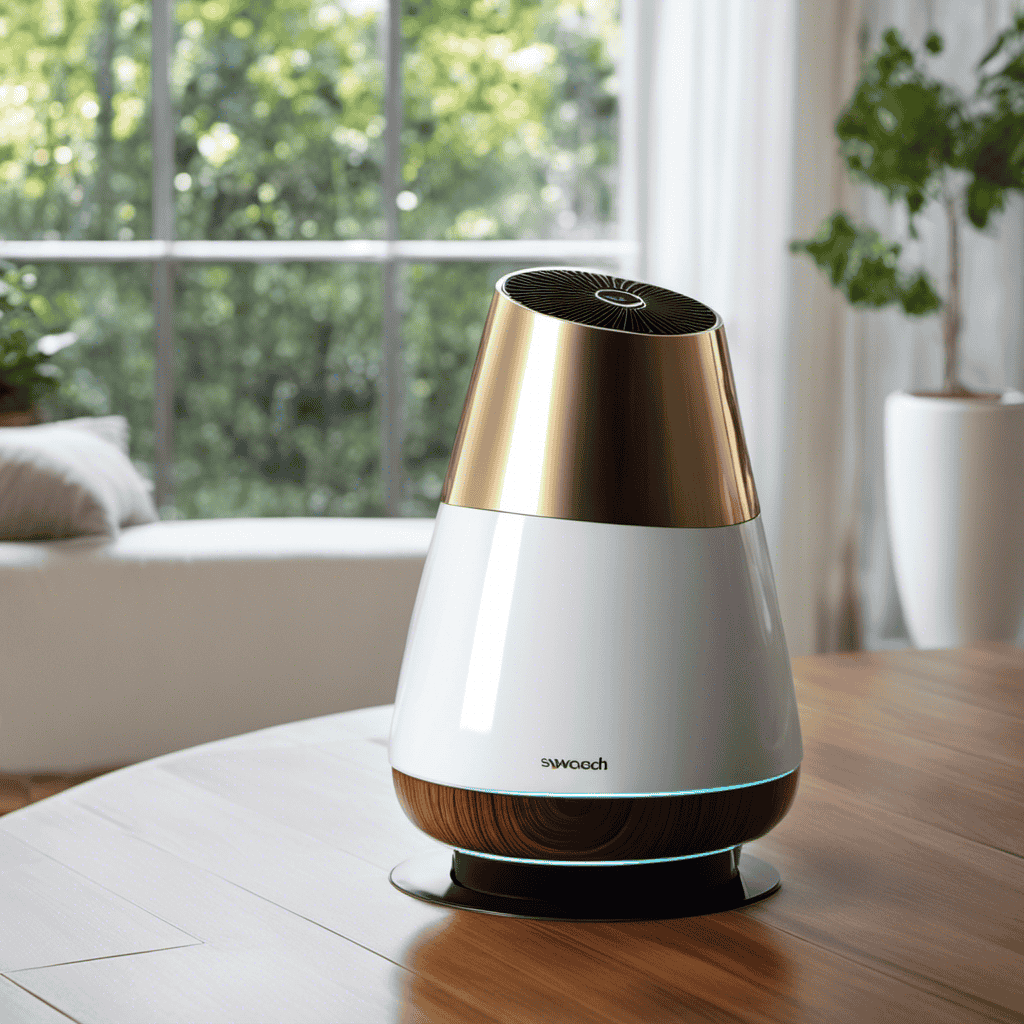
 Types of Air Purifiers4 months ago
Types of Air Purifiers4 months agoWhat Is an Air Purifier
-
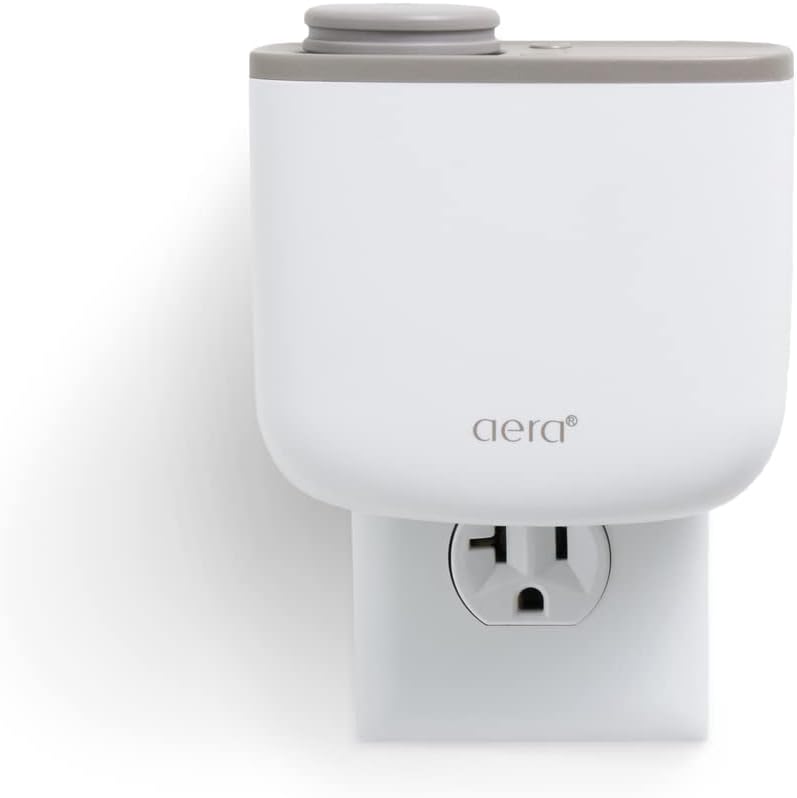
 Vetted2 months ago
Vetted2 months agoAera Mini Review: Smart Home Fragrance Diffuser With Hypoallergenic Scent Technology (2023)
-
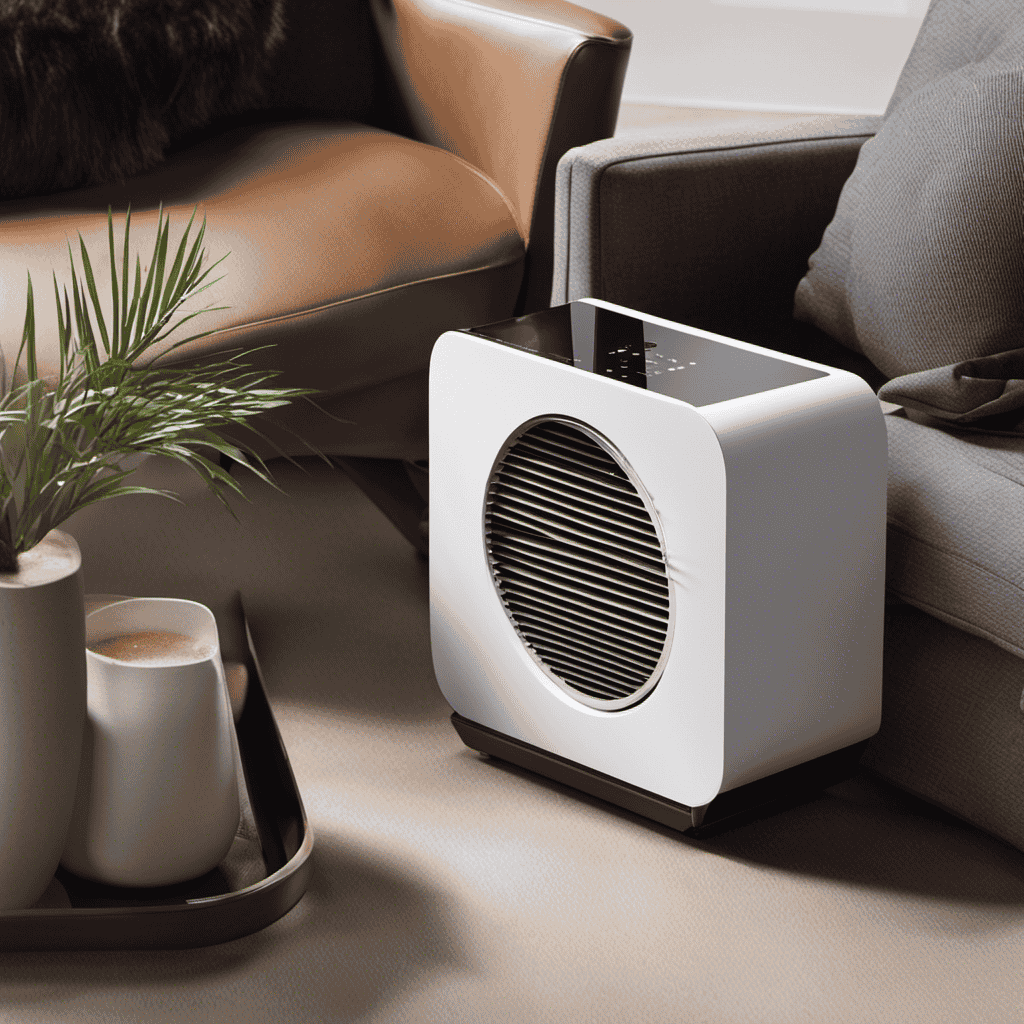
 Air Purifier Guides3 months ago
Air Purifier Guides3 months agoHow to Reset Filter on Miko Air Purifier
-
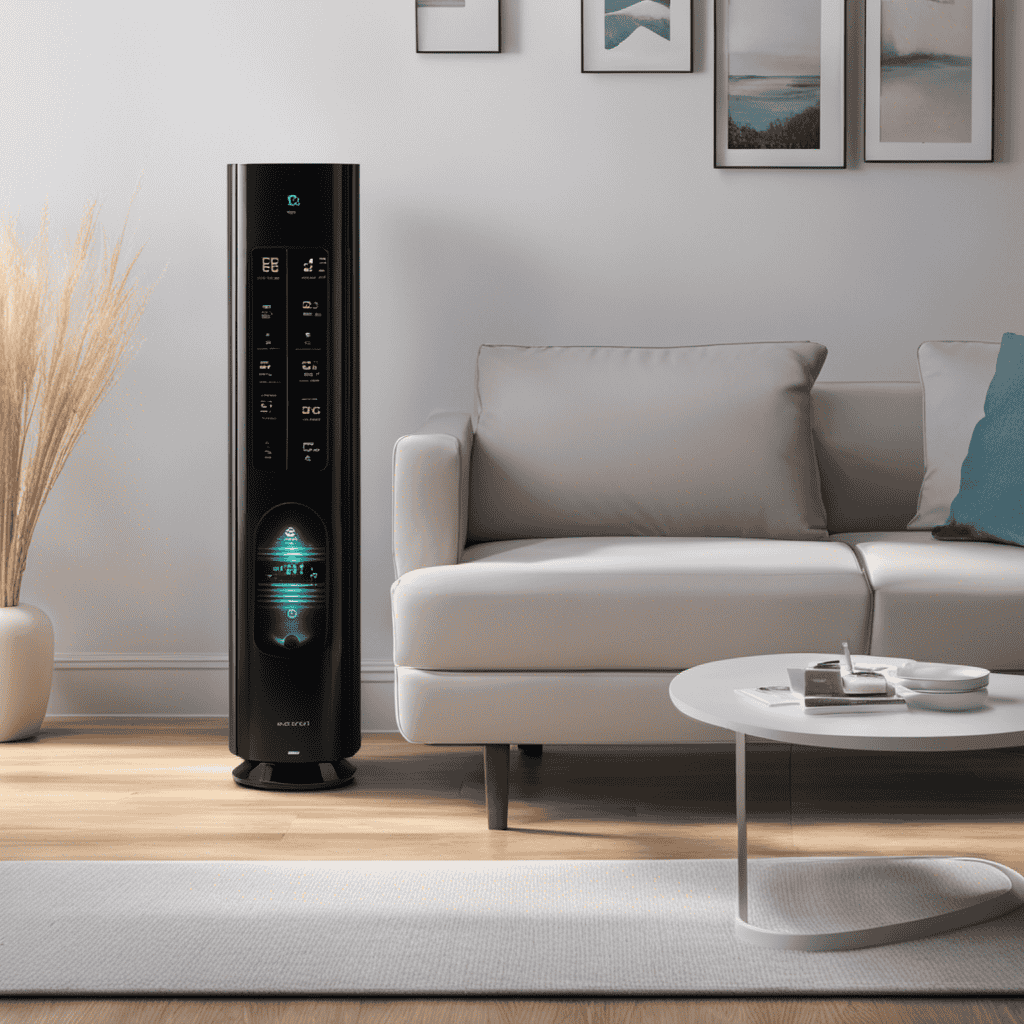
 FAQs - Advanced Queries1 week ago
FAQs - Advanced Queries1 week agoWhat Do the Numbers on My Air Purifier Mean
-
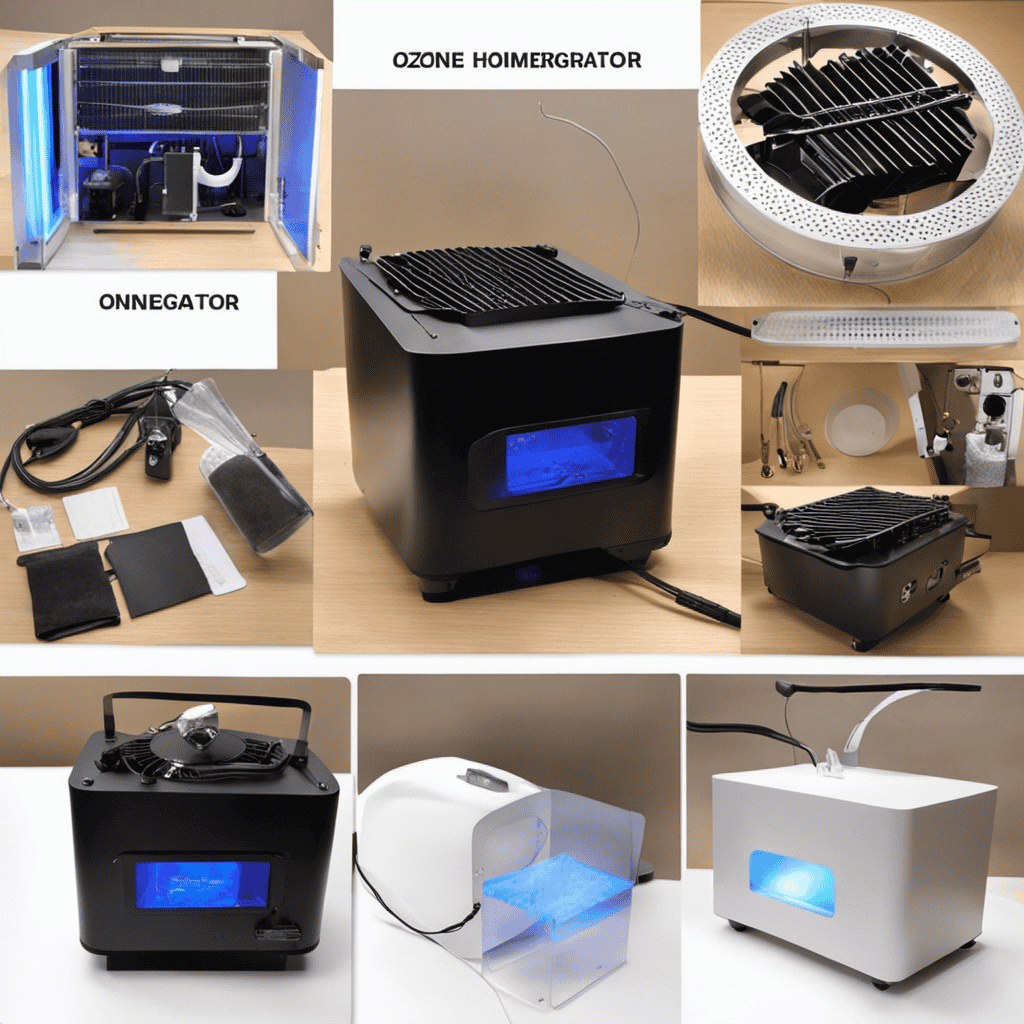
 Air Purifier Guides2 weeks ago
Air Purifier Guides2 weeks agoHow to Make a Homemade Ozone Generator (Air Purifier
-
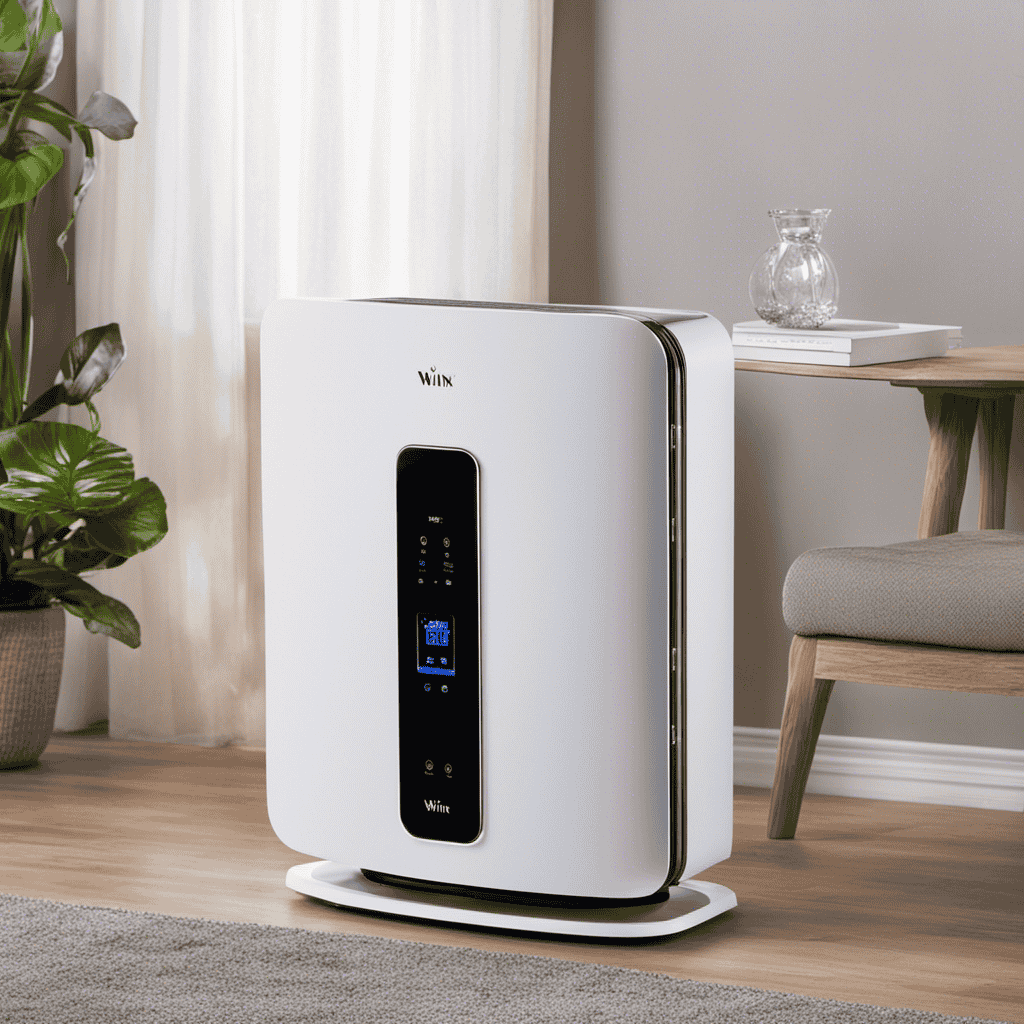
 Maintenance and Tips5 months ago
Maintenance and Tips5 months agoHow to Reset Filter Light on Winix Plasmawave Air Purifier
-
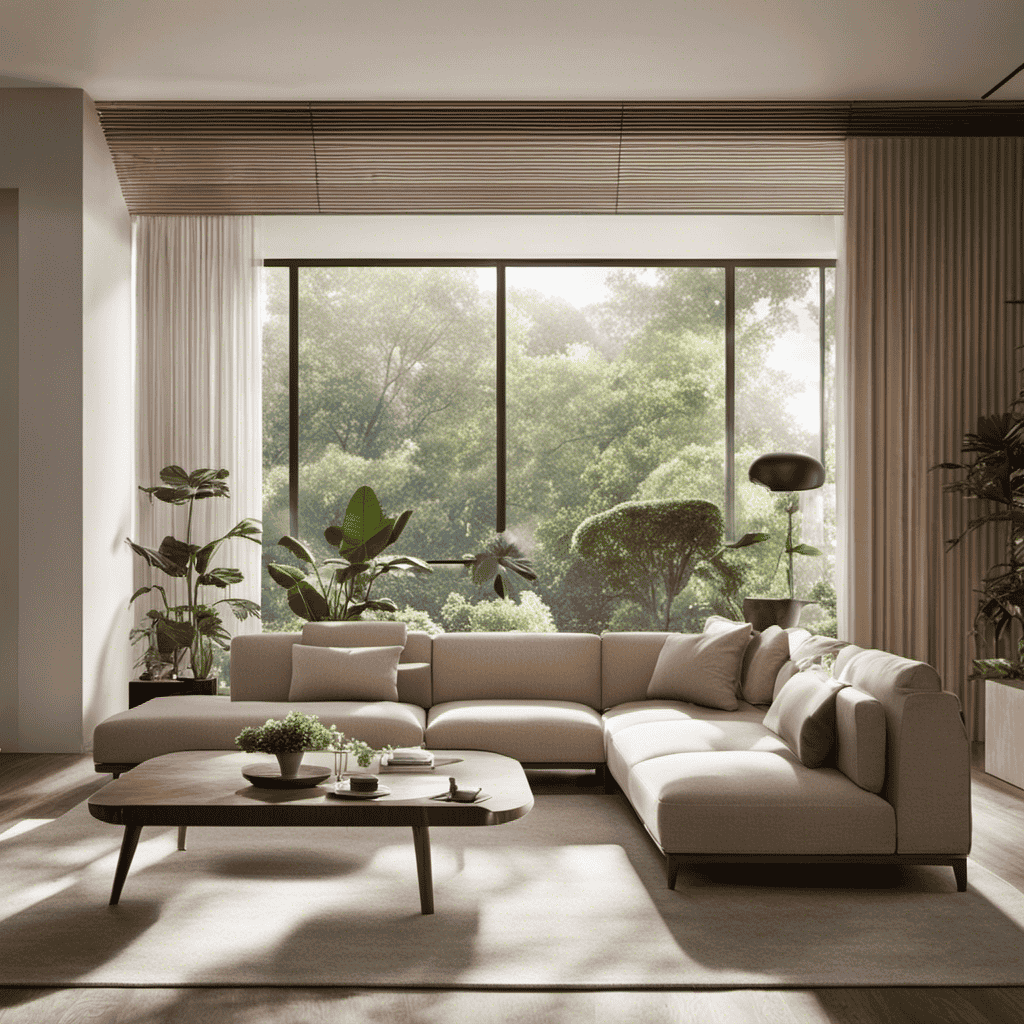
 FAQs - Advanced Queries5 months ago
FAQs - Advanced Queries5 months agoWhen to Use Ionizer on Coway Air Purifier
-
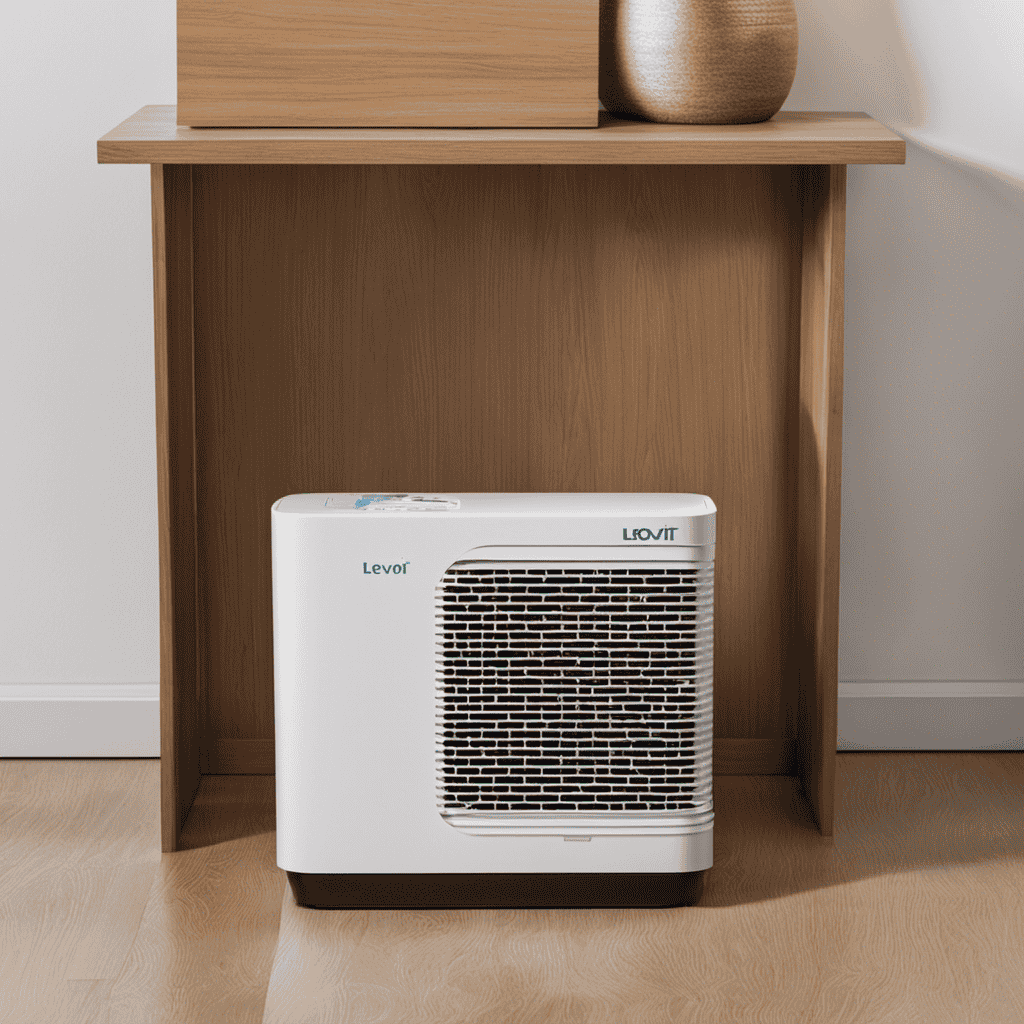
 Air Purifier Guides5 months ago
Air Purifier Guides5 months agoHow to Dispose of Air Purifier Filter Levoit








